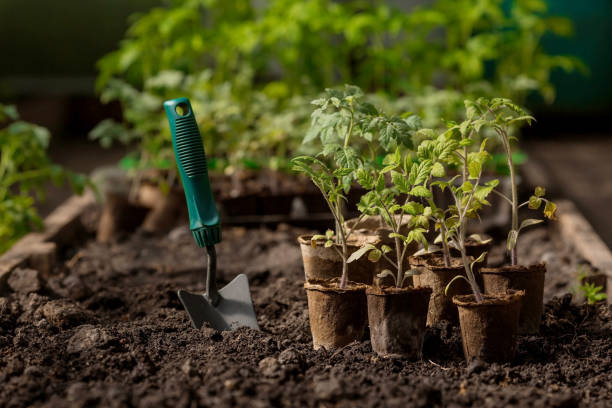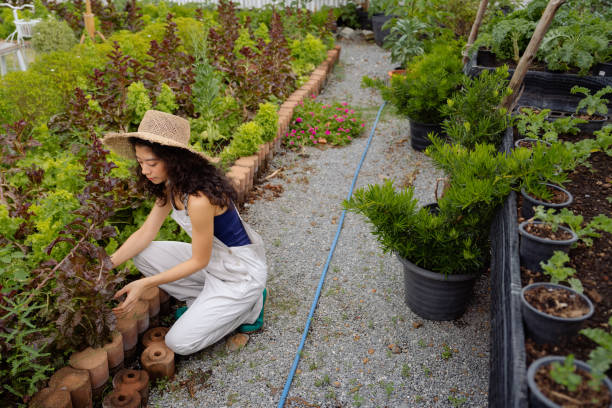
Gardening is a rewarding hobby that provides a sense of accomplishment, a source of fresh produce, and a way to connect with nature. Starting a garden from scratch may seem intimidating, but with a little planning and effort, you can have a thriving garden in no time. In this article, we will take you through the steps involved in starting a garden from scratch, from choosing a location to planting and ongoing care.
Choosing a Location
The first step in starting a garden is to choose a location. When selecting a site, consider the following factors:
Sunlight
Plants need sunlight to grow, so it’s important to choose a location that gets at least six hours of direct sunlight per day. If you’re not sure how much sunlight your garden will receive, you can use a sun calculator to estimate the amount of light in your area.
Soil Type
The type of soil in your garden will affect the plants you can grow and their growth. Ideally, you want soil that is well-draining, rich in organic matter, and has a pH between 6.0 and 7.0. You can have a soil sample tested to determine the pH and nutrient content.
Water Availability
Plants need water to grow, so it’s important to choose a location that is easily accessible to a water source. If you don’t have a convenient source of water, you may need to consider installing a watering system.
Preparing the Soil

Once you’ve chosen a location, the next step is to prepare the soil. Here are the steps involved in preparing the soil:
Test the Soil pH
The pH of your soil will affect the growth of your plants, so it’s important to test the soil before planting. You can purchase a soil pH test kit from a garden center or online. Simply follow the instructions on the kit to determine the pH of your soil.
Add Compost or Other Organic Matter
Compost or other organic matter will help improve the structure and fertility of your soil. You can purchase compost or make your own by composting yard waste and food scraps. Spread a 2-3 inch layer of compost over the soil and mix it in with a garden fork or tiller.
Tilling or Digging the Soil
Tilling or digging the soil will help to aerate the soil and allow water and roots to penetrate more easily. If you have a small garden, you can use a garden fork to turn over the soil. For larger gardens, you may need to rent a tiller.
Deciding What to Plant

The next step in starting a garden is to decide what to plant. When choosing plants, consider the following factors:
Climate and Growing Conditions
Each plant has specific growing requirements, such as the amount of sunlight, water, and soil type it needs to thrive. When selecting plants, choose those that are well-suited to your climate and growing conditions.
Annuals, Perennials, Vegetables, and Herbs
There are four main types of plants to choose from: annuals, perennials, vegetables, and herbs.
Annuals are plants that grow for one season and then die. They are a good choice for adding color to your garden and can be replanted each year.
Perennials are plants that come back year after year. They are a good choice for a low-maintenance garden and can provide a long-lasting source of color and interest.
Vegetables are plants that are grown for their edible parts, such as fruits, leaves, stems, or roots. Growing your own vegetables can save you money on groceries and provide you with fresh, nutritious food.
Herbs are plants that are grown for their fragrant leaves or flavorful seeds, which are used in cooking and as natural remedies. Growing your own herbs can save you money and provide you with fresh, flavorful ingredients for your recipes.
Size and Spacing of the Plants
When selecting plants, consider their mature size and the amount of space they will need in your garden. Make sure to plant them far enough apart to allow for adequate air circulation and to prevent overcrowding. The spacing requirements will vary depending on the type of plant, so be sure to check the plant label or do some research to determine the correct spacing for each type of plant you are considering.
Planting and Care

Once you have chosen your plants and prepared your soil, it’s time to plant. Here are the steps involved in planting and caring for your garden:
Proper Planting Techniques
When planting, make sure to dig a hole that is deep enough to accommodate the root ball and wide enough to allow the roots to spread out. Place the plant in the hole and backfill with soil, making sure to firmly pack the soil around the roots. Water the plant thoroughly after planting.
Watering and Fertilizing Requirements
Each type of plant has specific watering and fertilizing requirements, so be sure to check the plant label or do some research to determine the correct amount of water and fertilizer for each type of plant. In general, it’s best to water deeply and infrequently rather than lightly and frequently. Fertilize your plants regularly to promote healthy growth.
Ongoing Maintenance and Care
Ongoing maintenance and care is an important part of gardening. Here are some tasks you will need to perform to keep your garden healthy and thriving:
- Weeding: Regularly removing weeds from your garden will help prevent them from competing with your plants for nutrients and water.
- Pest Management: Pests can damage your plants, so it’s important to keep an eye out for any signs of infestation and to take action as soon as possible. There are many natural pest control methods, such as companion planting and using beneficial insects, that can be effective in controlling pests without the use of harmful chemicals.
- Pruning: Pruning is an important part of maintaining the health and appearance of your plants. Regular pruning will help encourage new growth and keep your plants looking their best.
Conclusion
Starting a garden from scratch can seem like a big undertaking, but with a little planning and effort, you can have a thriving garden in no time. By choosing a suitable location, preparing the soil, deciding what to plant, and providing proper care and maintenance, you can enjoy the many benefits of gardening and reap the rewards of your hard work. So get started today and start growing!





